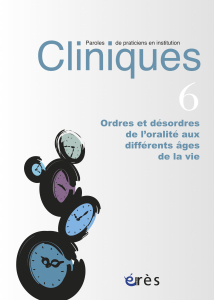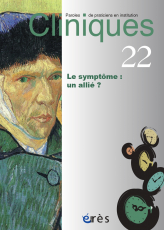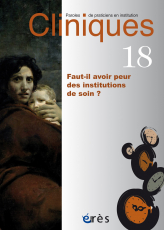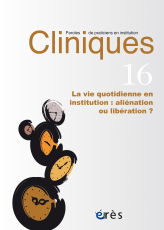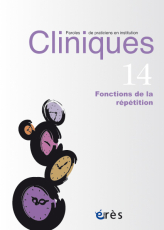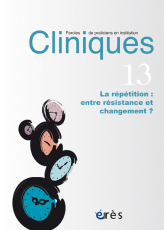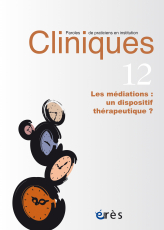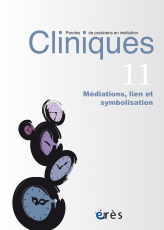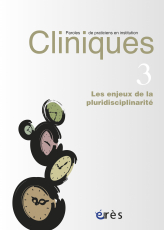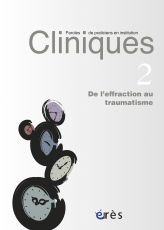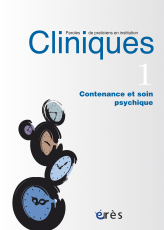Publications
Orality Orders and Disorders at Different Times of Life
Issue 6 : October, 2013
ISBN : 9782749239170
Human orality largely trespasses nutritional orality and covers a much bigger field than the only functional use of mouth. Orality is the link between somatic and psychic, from act to speech, at the crossroads of different drives, and becomes an opening between interior and exterior. It is also what makes the link, what creates a relation between the other and the world. Orality is therefore not only fundamental for our physiological survival but also the psychological one in as much as it places us in the intertwining relationship of man’s community. It also creates the first encounter with the world, develops infantile sexuality and supports the identity in as much as it is part of the foundations of identificatory realms. Digestion, physiological and psychological, will, during development, not only enable the incorporation but will support the appropriation process which transforms the non-Ego into Ego, the foreign object as part of oneself. From primary to secondary orality, we abandon the incorporation for more complex introjection processes.
Retreat, fixation or putting offside an operating orality, its major dysfunctions are the first stigmas of a major difficulty for an individual to be with himself and the others. Refusing to eat, or just filling up without nourishing, is attacking the connections of all nature (physiological, psychological or relational), it is refusing the measured relationship with another, it is fearing on one side intrusion, invasion, and on the other the emptiness of solitude, it is giving oneself the illusion of a reassuring autonomy, believing we do not need anyone or anything. It is often being scared of what is coming as well as being nostalgic of the past. It is breaking the relationship, in all cases, because we are scared of growing up, or because we are going to die, or because we are afraid of aging… When orality is troubled, it is not only the body that agonizes but also the psychic life, opening up to the other. Orality disorders at different times of life often translate an existential standstill. How do institutions and professionals accompany them? What answers are to be brought to different orality disorders? How can an operating oral function be accompanied in its reestablishment but also in its weaning which is the condition to the release from care?
Authors
Cécile ANTIGNY, Guillemette BALSAN, Linda BENATTAR, Nathalie BOIGE, Agnes BONNET, Thomas CASCALES, Colette COMBE, Gerard CUVELIER, Ophélie ENGASSER, Agnes GIBOREAU, Patrice HUERRE, Francis KATCHADOURIAN, Veronique LAURENT, Marie LE FOURN, Sylvain MISSONNIER, Luc MONNE DAO, Viriginie POUYET, Anna REGOL
Table of contents
Editorial. P de Saint Jacob
Introduction. C. Costantino
Clinical Crossroads
From Taking Action to the Introjection of Instincts in Institutional Therapy: Orality in Question. V. Laurent
Too Much Weight, Too Much What? P. Huerre
A Story of Obesity: When Weight Looks for a Limit. C. Antigny
The Young Girl with a Trunk: Thoughts About Refeeding in the Institutional Treatment of a Female Adolescent Hospitalized for Severe Anorexia Nervosa. G. Balsan
Maternal “Ravishment and Ravages,” a Clinical Observation of Femininity: From an Anorectic Reaction to a Melancholic Position. F. Katchadourian
Therapeutic Changes
Orality Disorders at the Dawn of Life: Between Pediatrics and Psychoanalysis. N. Boige, S. Missonnier
Weaning: An Organizing Time for Orality. T. Cascales
Writing Instead of Screaming: For a Clinical Diagnosis of Orality in Dementia. O. Engasser
Rap and Orality. A. Regol, A. Bonnet
Intersecting Reflections
Human Disaggregated Oral Manifestations and Ethics of Identification. C. Combe
Vampiric Process in Eating Disorders. L. Monné Dao
Encountering the Food, Nourishing the Encounter and Representations How to Question the Construction of the Ego through Nourishment. M. Le Fourn
Food Perception, Preferences, and Intake for Elderly People with Alzheimer’s Disease. V. Pouyet, A. Giboreau, G. Cuvelier, L. Benattar
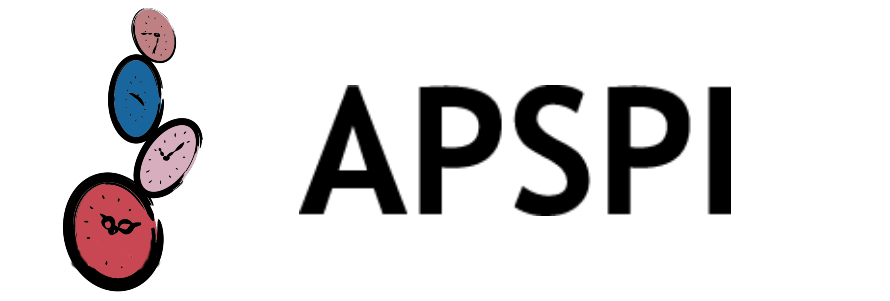
 Publications
Publications 